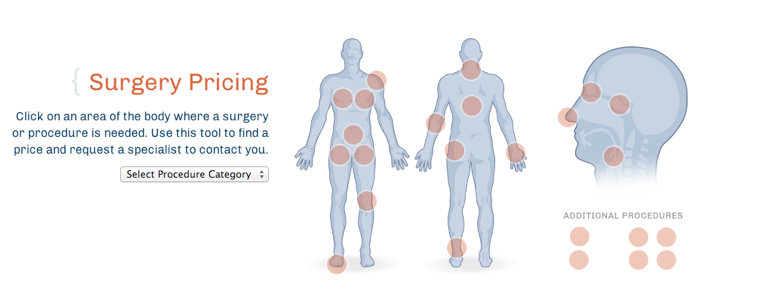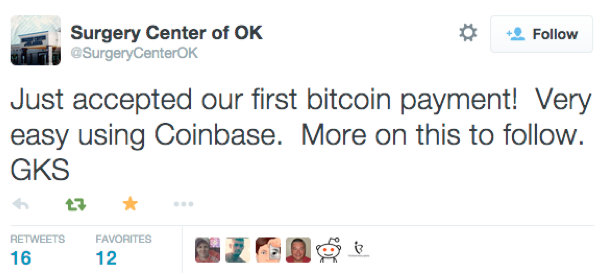I suspected we were dealing with a whole new breed of medical practice from the very first day.
On a Sunday afternoon, my partner confided to me that his torn bicep (the one that he’d hoped would heal after our canoeing accident) had not, in fact, gotten any better on its own in the four months since. He finally admitted that it was time for us to schedule a surgery if we ever wanted his full arm functionality back.
You could say we’re “self-insured” health-wise, meaning that we just save our money each month instead of shelling it out to corporate insurance companies. And when you’re self-insured, price tags suddenly take on serious meaning in a way that those with third party insurance never worry about.
Green Aliens from Space
There was just one problem—the overwhelming majority of corporate medical establishments don’t have prices. In fact, my partner and I had asked a few local hospitals and clinics for a quote on a bicep repair surgery, and received confused silences and blank stares each time. These receptionists appeared to have literally never been asked for the price of a surgery before. We didn’t realize that asking for a simple price quote had made us the equivalent of green aliens from space until we saw staffers’ almost-horrified reactions to our question.
So on that Sunday afternoon, seeing my partner in the vulnerable state of admitted defeat, a light went on in my head: that one surgery place in Oklahoma. I remembered someone had posted about it on Facebook a couple of years ago, this place that was becoming famous for the simple (and apparently revolutionary) act of having a price list.

A Litmus Test of Revolutionary Practice
A StartPage search of “Oklahoma + surgery + prices” led us straight to the Surgery Center of Oklahoma’s homepage. We perused the site’s diagram of a human body, where you click on the area that hurts and all the surgeries relating to that body part show up, along with their prices. We saw upper but not lower bicep tendon repair on the list, so we decided to send the Center an inquiry email.
Their “contact us” page listed only one email address—the co-owner and anesthesiologist Keith Smith’s very own email address! And that’s when I began to suspect that this was a kind of medical practice I’d never encountered before.
My suspicions were confirmed when, on that same Sunday afternoon, Keith himself—not his assistant or his assistant’s assistant—responded to our email within two hours with an exact price: US$4,950.
As my partner and I sat in awe, it came time to test just how different Keith Smith’s surgery center was—we replied asking if they’d accept Bitcoin and/or precious metals for payment. It was a long shot.
Keith’s next (prompt) response to us: “I will accept whatever payment method is most convenient for you.”
And so we booked our travel and began to pack our bags.

The Big Day
My partner was in his hospital gown on a gurney in the pre-surgery room. I’d just been invited to wait with him until it was time to start the procedure. The surgeon, Tom Howard, and his assistant, Don Flinn, were explaining the process to us. Tom described exactly what he’d do, how long the surgery would take and what recovery would look like. Both men’s manners were friendly, candid and approachable.
Somewhere in the back of my mind, I had this thought: In every hospital I’ve been to—with both of the surgeries I’ve personally had—I don’t remember ever being treated like this. . . like an equal.
And the uncannily equitable treatment didn’t stop there. Keith Smith and the other co-owner/anesthesiologist Steven Lantier both attended my partner’s bedside after Tom and Don left to prepare for surgery.
Keith and Steven gushed about how excited they were to be accepting Bitcoin and precious metals for the first time—about how alternative currencies were a perfect fit for the market-based business model they aimed to achieve. They were joking and laughing and seemed to legitimately enjoy their jobs—was this really a hospital?
It was then time for Steven to inject the nerve “block” that would numb my partner’s arm for the next 24 hours, so Keith and I went to take care of payment. Keith logged into his newly-created gold.
My partner and I wanted to pay half in gold, half in Bitcoin. When Keith first saw the bitcoins arrive in his wallet almost instantaneously, his reaction was classic and universal: utter delight.
Quid Pro Quo
After taking care of payment, I returned to the waiting room to get some work done during the surgery. Moments later, however, Keith came out and asked if I wouldn’t mind joining him and Steven in their office to answer a few questions about their new digital currency.
Do bees have knees?
And so for the remainder of the surgery, I sat with some of North America’s most revolutionary doctors and answered questions about cryptocurrency.
“If we wanted to convert to fiat, how would we do it?” I showed them Coinbase’s buy function and LocalBitcoin’s list of eager buyers.
“What are ‘confirmations’?” I showed them Blockchain’s block explorer and explained that confirmations from miners were needed to prevent double-spending.
“If we moved to Australia or something, would our bitcoins still be there waiting for us?” When I explained a brain wallet—that you can carry your wealth in your head to anywhere in the world—Steven’s jaw literally dropped.
Digital currency had its newest fans, right in the heart of Oklahoma.

The “Ask”
The Surgery Center of Oklahoma was not officially accepting Bitcoin when we first contacted them. My partner and I were unaware that just a few months prior, Keith had given an interview with Next News Network and mentioned that he was considering the digital currency. We just sent them an “ask,” and fortunately got a positive response in return.
I put out the “ask” almost every time I buy something: Do you accept Bitcoin? I know that the answer is almost always going to be “no,” but sometimes, it’s, “Not yet, but I’m interested.” This happened to me with a merchant on Etsy, a chiropractic masseuse and even a former landlord: none of them had ever taken Bitcoin, but on my inquiry, they got set up and I sent their first payment.
The “ask” doesn’t always work. But sometimes it does. And the results are marvelous.
Did you enjoy this article? You may also be interested in reading these ones:
